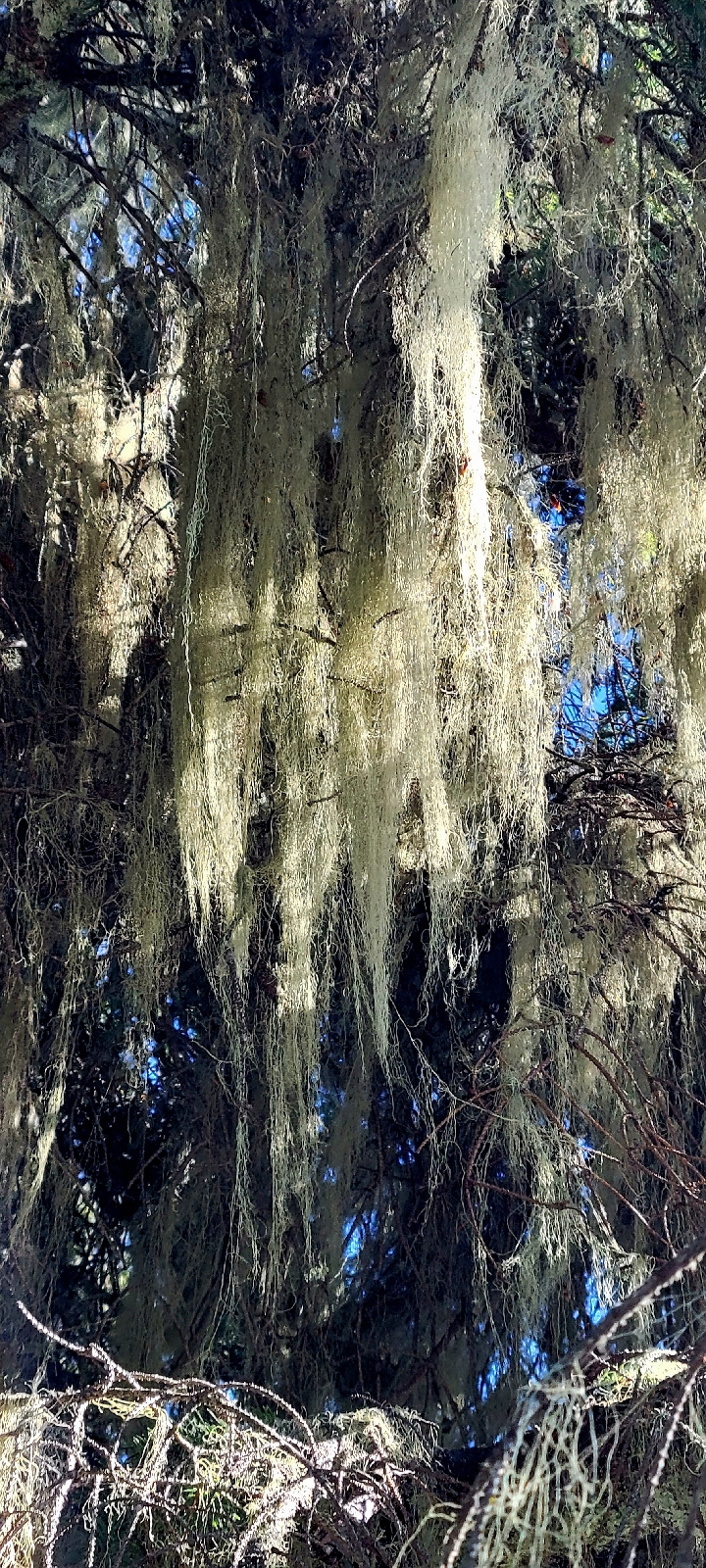I have observed the Lichen called Old Man's Beard growing contentedly from the cold heights of the Central Alaska mountains to the Tropics of South America, from sunny humid Florida to the high Andes mountains of Ecuador.
Old Man's Beard and Spanish moss
Several southern US states including Florida have an ephiphyte called Tillandsia or Spanish Moss. It is a true plant in the bromiliad family. This Air Plant attaches itself to tree branches and even the occasional power line. While it slightly resembles the old mans beard lichen the two are not related. Tillandsia is a plant. Old Man's Beard is not a plant. Instead it is a Lichen; a combined organism that arrises from algae bacteria and fungus.
Today on the trail these two completely diverse organisms posed together for their photo. In nature the Old Mans Beard Lichen thrives nearly everywhere around the world in some of the harshest and coldest climates on the planet. The Tillandsia is found only in the sub tropics and tropical regions of the world.
Old Man's Beard Lichen in Alaska
Pam & I photographed this Old Man's Beard lichen recently near the small Alaska town of Hoonah. It's resemblance to Spanish Moss was undeniable. However the nearest Tillandsia was literally thousands of miles away in the deep south of the lower 48.
An upclose look would reveal the differences but the untrained & uneducated observer would conclude that global warming was causing tropical Spanish Moss to thrive is Alaska!! As is so often true that would be an incorrect and unscientific conclusion.
A lichen is a composite organism that arise from algae or cyanobacteria living among filaments of multiple fungi in a symbiotic relationship. The combined lichen has properties different from those of its component organisms. Lichen is found in many forms, colors and shapes. Below are a few examples Pam & I photographed recently in Alaska.
Lichens are the very first organisms to colonize the granite rock walls as a glacier recedes. Beginning the long process of breaking down the substrate and paving the way for grasses and eventually shrubs and perhaps even trees.






No comments:
Post a Comment